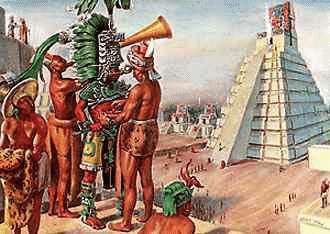You will need to commit to this for a while. Memory activation does not create instant results. Activation takes place in stages and layers. At first you will find the sacred calendar quite mental. If you find yourself mentally fuzzing out when you begin to place your attention on these teachings, understand that this is a common problem. You are just coming face to face with your own personal limitation program. You are hitting a time/space dimensional barrier and your body is saying I can’t do this, I can’t remember everything. I can’t be limitless.” I say you can, and you will. It is you destiny to do so.
This is a new year challenge. Commit yourself to remembering the totality of who you are by following these calendars for one earth cycle, just a short 365 days. Place your intention for just a few minutes every day on the Mayan day instead of the linear Gregorian day. Get your body cycling with the cosmos again, instead of the ticking clock. Move into the undulating, spiraling, ascending energy of the cosmos. Watch the sun rise and set. Watch the moon rise and set. Soon you will begin to dream with more detail. You will feel more deeply. Understand more clearly. You will feel a part of a much bigger whole. You will remember little pieces of information. They will just pop into you head. If this sounds good to you, lets get started.
The Basics of the Mayan Calendar
The Maya understood 17 different Calendars based on the Cosmos. Some of these calendars go back as far as ten million years and are so difficult that you would need an astronomer, astrologer, geologist, and a mathematician just to work out the calculations. Lucky for us we only need to work with three of these calendars. The calendars that are most important to beings of earth are the Haab, the Tun-Uc and the Tzolk’in. The Tzolk’in is the most important and the one with the most influence.
The Haab is based in the cycles of earth. It has 360 + 5 days, totaling 365 days. The Haab uses 18 months with 20 days in each month. There is a 19th month called a Vayeb and uses the 5 extra days. Each month has it’s own name/glyph. Each day uses a sacred sun/glyph.
The Tun-Uc is the moon calendar. It uses 28 day cycles that mirrors the women’s moon cycle. This cycle of the moon is broken down into 4 smaller cycles, of 7 day each. These smaller cycles are the four phases of moon cycle. Portal days (p), on the calendar provided marks days using mathematics of 28 and their fore have a connection with the moon cycles.
The Tzolk’in is the Sacred calendar of the Maya and is based on the cycles of the Pleiadies. The cycle of the Pleiadies uses 26,000 years, but is reflected in the calendar we are using by encompassing 260 days. It uses the sacred numbers 13 and 20. The 13 represents the numbers and 20 represents the sun/glyphs. The Tzolk’in has four smaller cycles called seasons of 65 days each guarded by the four suns of Chicchan, Oc, Men and Ahau. There are also Portal days within the Tzolkin that create a double helix pattern using 52 days and the mathematics of 28. This sacred calendar is still being used for divination by the traditional Maya all over the Yucatan, Guatemala, and Belize, and Honduras.
The Tzolkin calendar was meshed with a 365-day solar cycle called the “Haab”. The calendar consisted of 18 months with 20 days (numbered 0-19) and a short “month” of only 5 days that was called the Wayeb and was considered to be a dangerous time. It took 52 years for the Tzolkin and Haab calendars to move through a complete cycle.
These are the Mayan words for periods of time: Day = Kin (keen)
Month of 20 days = Uinal (wee nal)
Year of 360 days = Tun (toon)
20 Tuns = K’atun (k’ ah toon)
20 K’atuns = Baktun (bock toon)
During their stay on earth the Cosmic Maya carried the burden of time. Cosmicly aware of cycles of time they were bound, as we are, by walking through time in a linear fashion. They were aware that beings of earth had lost the natural ability to ride the cycles of time/light/energy, to time travel. It is also known by the Cosmic Maya that this present linear fashion of time will transform into multidimensionality, and will not be limited to linear time on earth much longer. Now isn’t this why we came here to remember and to witness at this time? Do you remember? “Evam maya e ma ho” All hail to the harmony of all mind and nature.
Mayan Prophecies and Calendar -2
Mayan Calendars

Maya priests observed the positions of the sun, moon, and stars. They made tables predicting eclipses and the orbit of the planet Venus.
The priests also used mathematics and astronomy to develop two kinds of calendars. One was a sacred almanac of 260 days. Each day was named with one of 20 day names and a number from 1 to 13. Each of the 20 day names had a god or goddess associated with it.
The priests predicted good or bad luck by studying the combinations of gods or goddesses and numbers. The Maya also had a calendar of 365 days, based on the orbit of the earth around the sun. These days were divided into 18 months of 20 days each, plus 5 days at the end of the year.
The Maya considered these last 5 days of the year to be extremely unlucky. During that period they fasted, made many sacrifices, and avoided unnecessary work.
The Maya Indians of southern Mexico and Central America used mathematics and astronomical observations to formulate two kinds of calendars–a sacred almanac of 260 days and a solar calendar of 365 days.